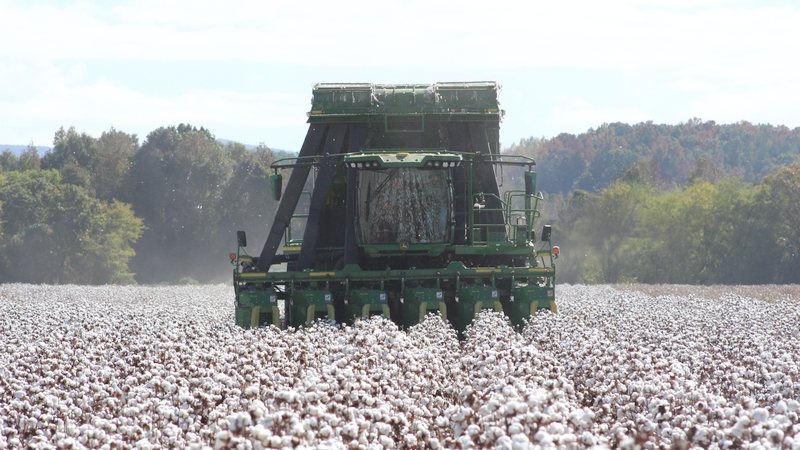Food Crops, Cellulose Cloud Market Share Predictions
EDITOR’S NOTE: Textiles Intelligence Limited is a leading provider of business information on the global fiber, textile and apparel industries. The company offers five publications: Textile Outlook International, Technical Textiles Markets, Global Apparel Markets, Performance Apparel Markets, and Home Textiles Update. The publications provide a number of different types of reports, including company and country profiles, statistical reports and analyses of trade trends. The company also offers conference presentations and special reports from a team of industry experts. For more information, please visit the Textiles Intelligence website, www.textilesintelligence.com, or email the company at editorial@textilesintelligence.com.
When faced with higher cotton prices in 2010/11, many manufacturers cut back on orders for raw cotton and cotton textiles. At the same time, a number of manufacturers substituted other fibers in place of cotton in order to keep costs down. As a result of these actions, there has been a sharp drop in demand for cotton.
With cotton demand expected to be lower and production higher in 2012, it is not surprising that cotton prices have fallen. Although lower prices should help to increase the demand for cotton in 2011/12, the increase could be limited by continued substitution of other fibers – a trend that could shift back if the price of cotton continues to decrease while that of other fibers increases. In the first week of January 2012, the dollar price of cotton was 42% lower than a year earlier, while the dollar price of polyester was 26% higher.
Demand for man-made fibers has outpaced demand for natural fibers since 2006, years before the volatility affected the cotton industry. This continuous rise has been facilitated by significant increases in man-made fiber production, especially in China.
While cotton and silk demand recovered slightly during 2010, there are indications that growth in demand for natural fibers has slowed, making it unlikely that natural fibers will be able to regain their share in the near future – especially since the man-made fiber sector continued to grow in 2011.
According to the International Cotton Advisory Committee (ICAC), global demand for cotton in the 2011/12 season is likely to be down by 0.4% to 24.39 million tons while production is set to increase by 8.0% to 26.88 million tons – its highest since 2004/05. However, according to ICAC, the area planted to cotton worldwide will drop 8% in 2012/13, and production will decrease 6%.
Some experts believe that cotton production may be limited in the future by the availability of arable land. As much as 2.5% of land which can be used to grow crops is lost every ten years due to urbanization, desalination and decertification.
Cotton production will also be affected by the need to grow food crops on the land which is available. The world’s population is expected to increase 20%, adding 1.4 billion people, by 2030. The demand for food, however, will grow even faster – by an estimated 43% – due to increasing per-capita food consumption as incomes rise.
There are concerns that a global food crisis in the next two decades could increase competition for arable land, not only from crop farmers, but also from producers of biofuels and animal feedstuffs. Furthermore, agricultural land is losing soil and fertility because of wind and water erosion, nutrient depletion, and chemical pollution.
No Consensus on the Near Future
Predictions as to how much global fiber demand will increase over the next 10 years vary greatly. Some experts believe fiber consumption will be 22 million tons greater in 2020 than it was in 2010, and that the extra demand will be met partly by an additional 4.8 million tons per year of cotton and an additional 14.8 million tons per year of polyester.
Others are more bullish, predicting world fiber demand in 2020 will be 30.3 million tons higher than it was in 2010, with 19.7 million tons coming from synthetic fibers and 6.1 million tons from man-made cellulosic fibers. The latter prediction is based on the assumption that one-third of textile fibers will need to have properties such as absorbency and moisture management, and that only cellulose-based fibers can provide these properties.
If this assumption is correct, the share of man-made cellulosic fibers in total fiber demand will increase significantly as cotton production flattens out. Both sets of predictions assume there will be massive investment to increase man-made fiber capacity, although the latter prediction implies a much greater increase in man-made cellulosic fiber capacity.
Due to developments in the past 25 years, the manufacture of man-made cellulose fibers has improved and some experts believe it to be more environmentally friendly than that of synthetic fibers. The former can be made from wood pulp obtainable from sustainable forests, whereas the latter relies on the continued production of petrochemicals from fossil fuels.
However, less energy is consumed during the laundering of textiles and garments made from synthetic fibers. Therefore, deciding which fiber type is more environmentally friendly is a complicated and controversial issue.
Taking predictions of demand even further into the future, some believe that by 2030, annual fiber consumption will be 61 million tons more than in 2010, of which 42.1 million tons will be synthetic fibers and 14.8 million tons will be man-made cellulosic fibers.
Meanwhile, the average yield from cotton growing is expected to increase to about 850 kg/ha in 2015 and then rise to 925 kg/ha in 2030 – but it is expected to level off at that point.
The amount of land dedicated to cotton cultivation is expected to fall progressively from 31 million hectares (ha) in 2015 to about 28 million ha in 2030. The result would be a maximum theoretical cotton production level of 26.35 million tons in 2015, falling to 25.90 million tons by 2030.









